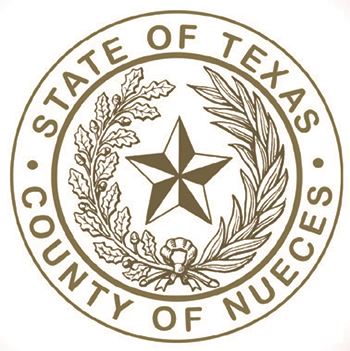Nueces County Airport (RBO), is a small general aviation airport located in Robstown, TX – about 30 miles west of Corpus Christi and the Gulf of Mexico. RBO doesn’t have to deal with snow or ice. However, occasional hurricanes and tropical storms coming off the Gulf do pose a real threat.
Practically speaking, flood zones and aging fuel tanks just don’t mix.
 This was the predicament facing John Cox, manager of Nueces County Airport (RBO), a small general aviation airport located in Robstown, TX.
This was the predicament facing John Cox, manager of Nueces County Airport (RBO), a small general aviation airport located in Robstown, TX.
“We only had one 8,000-gallon fuel tank buried underground. It was put in about 40 years ago, and had far outlived its useful life,” Cox relates. “For the past several years, I often have lost sleep worrying about having some sort of a serious leak.”
Located in southeastern Texas, about 30 miles west of Corpus Christi and the Gulf of Mexico, RBO doesn’t have to deal with snow or ice. However, occasional hurricanes and tropical storms coming off the Gulf do pose a real threat.
|
Project: New Fuel Tanks & Dispensing System Location: Nueces County (TX) Airport Annual Operations: 12,000 Construction: March 2021-March 2022 Cost: $832,940 Key Components: Two 12,000-gal. aboveground tanks; modernized point-of-sale system Funding: 90% TXDOT; 10% Nueces County Engineering & Design: Argus Consulting Main Civil Contractor: Garrett Construction Skid, Tanks & Piping: Alpaugh Supply Tank Manufacturer: Alabama Tank Fuel System Management Unit: Fuelmaster 2550 General Contractor: D&H United Key Benefits: Improved safety with aboveground tanks & infrastructure; increased fuel storage capacity (from 8,000 gal. to 24,000 gal.); addition of Jet-A fuel; reduced fuel delivery expenses; diminished environmental concerns; new infrastructure designed for long lifecycle & high return on investment |
Cox and his team knew they had to address the safety concerns associated with RBO’s old fuel tank. They also wanted to increase fuel sales by beginning to offer jet fuel. In addition, going from a single 8,000-gallon tank to a pair of 12,000-gallon tanks would save money in future delivery charges. In the past, RBO had to pay a surcharge when a supply truck came to fill the old 8,000-gallon tank, because that was considered a partial refill. A 12,000-gallon tank is the industry norm, and more “truck-friendly,” Cox explains.
To address these issues, airport officials asked the Texas Department of Transportation (TXDOT) to fund a modern, aboveground fuel station. Their pitch was successful, and TXDOT awarded the engineering and construction contract for the project to Argus Consulting through the state’s standard bidding process. The company’s responsibilities included planning, surveying, design, bidding support and construction support.
“Once we got the green light from TXDOT to do this project, one of our first roles was to select the ideal location on airport property in which to place the proposed facility,” states Garrett Gjerstad, business unit director of general aviation for Argus. “We also needed to set up a procedure to allow the removal of the old tanks and infrastructure once the new fuel system was commissioned and fully functional.”

Engineers located the new fueling station at the northeast side of the apron, which is convenient to the runway and main terminal building, notes Gjerstad.
The airport’s outdated underground tank system has been replaced with a new, code-compliant aboveground facility. The new system includes two 12,000-gallon double-wall fuel storage tanks (UL-2085) with a combination self-serve over-wing fuel dispensing skid. The tanks are above ground, with pipes leading to the new dispensing skid and aircraft fueling position.
In addition to increasing its storage capacity for Avgas (100LL), the airport opted to add Jet-A fuel to help broaden its customer base and provide additional services.
The new tanks are configured to allow transport trucks to deliver fuel directly into the tanks. The dispensing skid includes a modern fuel management unit with a credit card reader that can be accessed by pilots for self-service fueling. An on-station adapter is available for pilots who require under-wing fueling.
Weather Issues
 Construction of the new system started in March 2021, and contractors had only worked a few weeks before encountering the biggest challenge of the entire project. In May and June, several severe thunderstorms pounded the region. “Due to the airport’s location, it is very susceptible to flooding,” states Seth Newbold, Argus’ construction manager for the project. “At one point during these storms, the construction site was under 2 feet of water!”
Construction of the new system started in March 2021, and contractors had only worked a few weeks before encountering the biggest challenge of the entire project. In May and June, several severe thunderstorms pounded the region. “Due to the airport’s location, it is very susceptible to flooding,” states Seth Newbold, Argus’ construction manager for the project. “At one point during these storms, the construction site was under 2 feet of water!”
Eventually, three change orders were issued to extend the contract completion date, but airport officials and TXDOT both accepted the development. The harsh storms had affected virtually everyone in the region in some form or fashion.
Even when the flooding subsided, weather challenges remained. “We were about to pour concrete when more heavy rains came,” Newbold recalls. “To do this, we needed at least one week of dry weather, preferably two. This also delayed the project. Fortunately, the contractor was really good about catching up. Ultimately, the weather challenges ended up causing about a four-month delay.”
In the end, construction lasted about one year.
Project Paying Dividends
The new fueling station has been open nearly a year now, and airport employees continue to receive very positive feedback from pilots. They appreciate the capability for complete self-service, and the 75-foot hoses at the pump work for nearly any type of aircraft.
With jet fuel now available, the airport is already drawing more jet traffic. “We have jumped from 0% sales in jet fuel to about 20% of our total fuel sales in the last few months,” Cox reports. “I also believe our newly remodeled terminal, which includes a reception area and conference room, will make RBO a more attractive destination for pilots.”
In another positive development, Tesla is planning to build a factory nearby to make batteries for its electric cars. Once it opens, Cox expects increased aircraft traffic associated with the new manufacturing facility. “In the near future, we may have to extend our [3,700-foot] runway to accommodate potentially larger jets,” he says. “But that is a welcome challenge for another day.”
Perhaps most importantly, Cox is confident that the new fuel system is sturdy enough to withstand any weather. “Here in Texas, there is a saying: ‘Run from water, and hide from the wind.’ Our new fuel facility should hold its ground against everything Mother Nature throws at us.”




